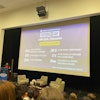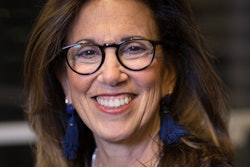Twenty percent of college students in the United States are raising children, yet the much-touted “free college” initiatives, also known as Promise programs, often “unintentionally exclude” these students when offering financial support, according to a briefing paper released this week by the Institute for Women’s Policy Research (IWPR).
The institute’s analysis pointed out various restrictions and requirements in the college Promise programs that exclude students who may be most in need of support. Among the more than 300 college Promise programs in 44 states, the majority exclude students over the age of 25 – making many students who have started families ineligible for Promise financial assistance, the Washington-based policy institute reported.
“College Promise programs that just cover the cost of tuition and fees may not do enough to allow students with children and others with high financial need to afford to enroll,” the paper stated, and recommended allowing aid to help students cover other costs including housing, childcare, food and transportation.
 Lindsey Reichlin Cruse
Lindsey Reichlin Cruse“College Promise programs must take into account the unique circumstances experienced by student parents, along with other adult and high-need students,” the briefing paper proposed.
Lindsey Reichlin Cruse, one of the authors of the paper, told Diverse that the positions outlined in the paper are not intended to disparage Promise programs. On the contrary, she said, “Any efforts by states and by the country to make college more affordable [are] important and a huge step in the right direction,” Cruse said. “But when they are designing these programs, they have to take into account the different circumstances students are facing when deciding whether college is affordable.”
The report, funded by the Annie E. Casey Foundation, noted that for low-income families with caregiving and work responsibilities, college enrollment can mean risking family stability and the possibility of incurring student debt.
Cruse explained that in some cases “program eligibility rules are such that student parents are excluded unintentionally because they don’t meet age requirements or academic performance requirements from high school or other factors that may preclude them from benefiting from these programs … If [these students] don’t work, they wouldn’t be able to put food on the table,” she said.
Many of those who are left out are women. The briefing paper noted that 70 percent of undergraduates who have children are women, and two in five are single mothers, suggesting that the restrictions adversely affect women, and single women with children.
The institute’s research revealed that student parents and particularly single mothers, are more likely to live in or near poverty compared with students who do not have children. It also pointed out that 51 percent of parents in college are students of color.
Noting that “free college has been a staple in many policy platforms championed by 2020 presidential candidates,” Cruse suggested that proponents of the programs should recognize the need to make sure student parents “are central to achieving the country’s college equity and access goals that Promise programs are designed to achieve.”
Specific recommendations included removing requirements that limit participation to recent high school graduates and full-time students; ensuring access for underrepresented students with the highest financial need; providing support to students who take longer to complete degrees; and helping students cover non-tuition costs such as transportation and childcare.
The researchers concluded that making these programs more inclusive for the students who need them most “should be a top priority for the college Promise movement moving forward.”





















